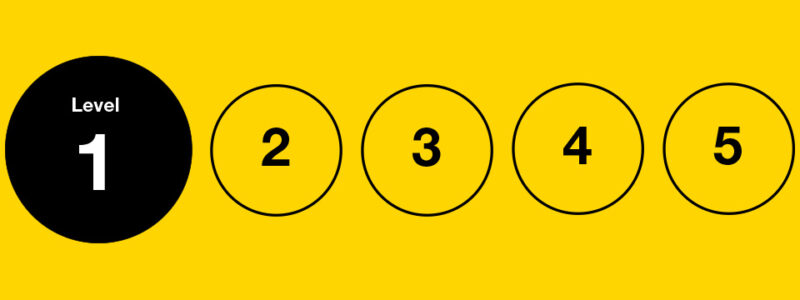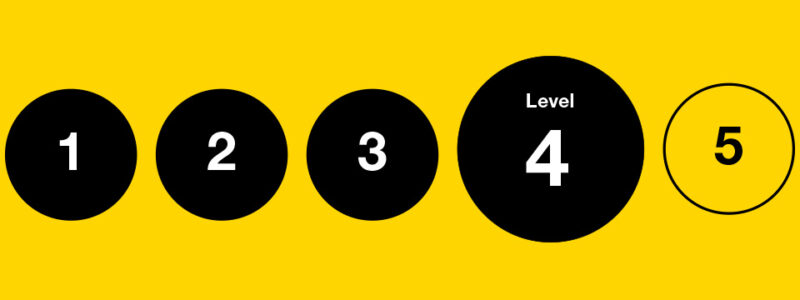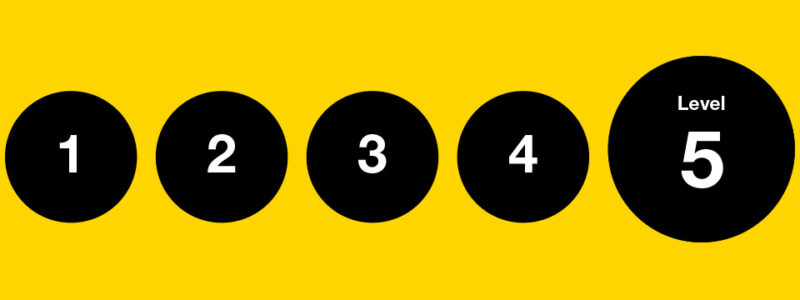Keep track of your progress learning to drive
Each of the 27 driving skills has 5 levels of progress, so it’s important to keep track of your progress as you learn to drive.
You’ll be ready to take your driving test when you’re consistently achieving level 5 (reflection) for each of the 27 skills.

Level 1: Introduced
The subject is introduced, and you’re able to follow the instructions you’re given.

Level 2: Helped
You’re improving with the skill, but still need a bit of help.

Level 3: Prompted
Sometimes you need prompting with the skill, especially if it’s a new or unusual situation.

Level 4: Independent
You’re dealing with the skill consistently, confidently and independently.

Level 5: Reflection
When you talk to your instructor, you show that you understand how things would have been different if you had done something differently. You can adapt to situations and see why perfecting the skill makes you safer and more fuel-efficient.
How long does it take to learn the skills?
There’s no minimum number of lessons you must have or hours you must practise driving to pass through the 5 levels of progress.
How many lessons you need will depend on how quickly you learn.
Research shows that, on average, it takes people 45 hours of driving lessons with a driving instructor plus 22 hours of private practice to pass their test. But those who manage 100 hours of driving lessons plus practice are much safer on the road after their test.
Research also shows that people who combine their driving lessons with private practice are 50% more likely to pass the driving test.
45 hours of driving lessons with a driving instructor on average to pass
22 hours of extra private practice between driving lessons on average to pass
Keep track of your progress
Use the driver’s record to help you and your driving instructor to keep track of your progress while you’re learning to drive. You and your instructor will be able to see at a glance which topics you need to improve.
You can also keep a record of any practice you have without your driving instructor. This can include any worries you have about your driving. You can then discuss these with your instructor.
Other ways to keep track of your progress
There are different ways of tracking your progress.
Your driving instructor might use a different form or app with different levels. That’s fine, as long as you have progressed and can carry out the behaviours of level 5.
Previous page:
Next page:
Check you’re ready to pass
You’ll usually be ready to take your driving test when:
1You do not need prompts from your driving instructor.
2You do not make serious or dangerous mistakes when you’re driving.
3You can pass mock driving tests.
4You have practised ways of managing your nerves.
5Your driving instructor agrees you are ready.
Not feeling completely prepared?
Only take your driving test if you’re feeling completely prepared.
You can move your driving test back if you’re not feeling quite ready yet.
It’s free to change your appointment time, as long as you do it at least 10 full working days (Mondays to Saturdays) before your test.